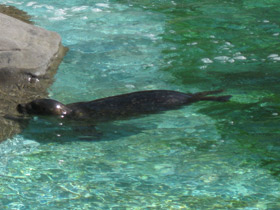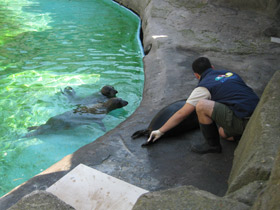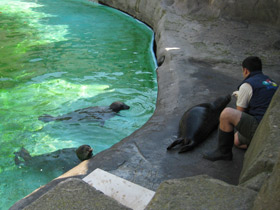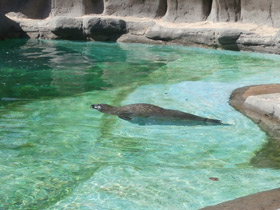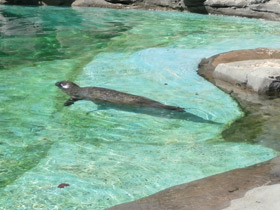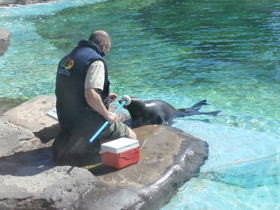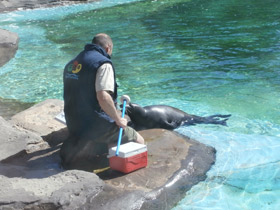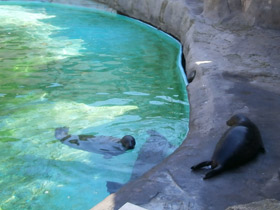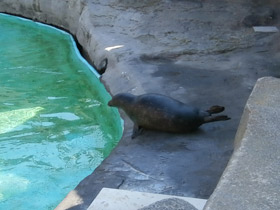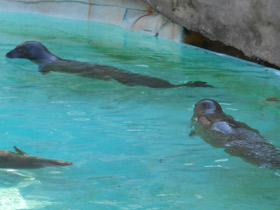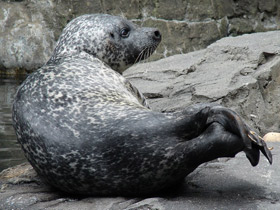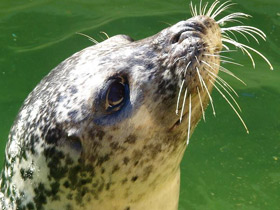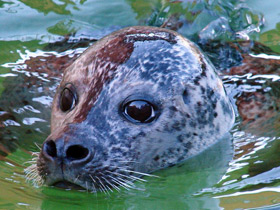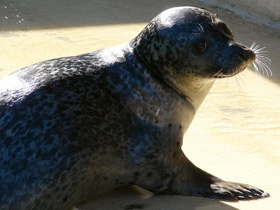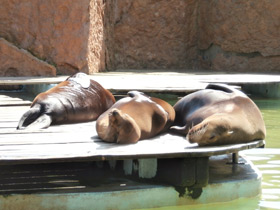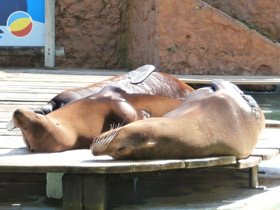The harbor (or harbour) seal or the common seal (Phoca vitulina)
Harbor seal видео
The harbor (or harbour) seal (Phoca vitulina), also known as the common seal, is a true seal found along temperate and Arctic marine coastlines of the Northern Hemisphere. The most widely distributed species of pinniped (walruses, eared seals, and true seals), they are found in coastal waters of the northern Atlantic and Pacific oceans, Baltic and North seas.
Description and habitat area
Phoca vitulina is a species of pinniped mammal of the phocidae family that inhabits the coastlines of temperate and cold seas in the northern hemisphere. It can be found in the coastal waters of the northern Atlantic and Pacific, as well as in the Baltic and North Seas, making it the most widely distributed species of the pinniped order, which includes walrus, otariids and true seals.
Phoca vitulina can be brown, reddish or grey in colour and have distinctive V-shaped nostrils. Interestingly, each Phoca vitulina has its own individual body pattern and its colouration can vary considerably.
Most often the colouration is brown, red and grey, and there are small black and brown spots scattered all over the body, which are shaped like oblong strokes.
Phoca vitulina has an egg-shaped head with a short snout and large, expressive dark brown eyes. Mature specimens reach between 1.6 and 1.85 m in length and weigh between 80 and 130 kg (their degree of fatness depends largely on the time of year).
Females are smaller than males, reaching 150 cm in length and weighing only 45-90 kg. Phoca vitulina usually inhabit rocky areas, where they are difficult for predators to reach. The world population of seals ranges from 400,000 to 500,000, but some subspecies are endangered.
Behavior, survival, and reproduction
Harbor seals are solitary, but are gregarious when hauled out and during the breeding season, though they do not form groups as large as some other seals. When not actively feeding, they haul to rest. They tend to be coastal, not venturing more than 20 km offshore. The mating system is not known, but thought to be polygamous. Females give birth once per year, with a gestation period around nine months. Females have a mean age at sexual maturity of 3.72 years and a mean age at first parturition of 4.64. Both courtship and mating occur under water. Researchers have found males gather under water, turn on their backs, put their heads together, and vocalize to attract females ready for breeding. Pregnancy rate of females was 92% from age 3 to age 36, with lowered reproductive success after the age of 25 years.
Birthing of pups occurs annually on shore. The timing of the pupping season varies with location, occurring in February for populations in lower latitudes, and as late as July in the subarctic zone. The mothers are the sole providers of care, with lactation lasting 24 days. The single pups are born well developed, capable of swimming and diving within hours. Suckling for three to four weeks, pups feed on the mother's rich, fatty milk and grow rapidly; born weighing up to 16 kilograms, the pups may double their weight by the time of weaning.
Harbor seals must spend a great deal of time on shore when molting, which occurs shortly after breeding. This onshore time is important to the life cycle, and can be disturbed when substantial human presence occurs. The timing of onset of molt depends on the age and sex of the animal, with yearlings molting first and adult males last. A female mates again immediately following the weaning of her pup. Harbor seals are sometimes reluctant to haul out in the presence of humans, so shoreline development and access must be carefully studied in known locations of seal haul out.
In comparison to many pinniped species, and in contrast to otariid pinnipeds, harbor seals are generally regarded to be more vocally reticent. However, they do utilize non-harmonic vocalizations to maintain breeding territories and to attract mates during specified times of year, and also during mother and pup interactions.
Annual survival rates were calculated at 0.91 for adult males, and 0.902 for adult females. Maximum age for females was 36 and for males 31 years.
Nutrition
Phoca vitulina has a strong jaw with large tusks and strong teeth, which it uses to prey on small octopus, crabs, shrimp and fish. These pinnipeds usually feed at depths of 10-150 metres, although they can dive to 450 metres. These seals catch about 30 species of marine fish: flounder, Baltic herring, cod, eel, sand lance and smelt. Regardless of their range, Phoca vitulina eat 5-8.5 kg of fish per day.
Reproduction
Terrestrial forms of Phoca vitulina migrate to shoals that form during low tides to give birth. Under these conditions, newborn fish should be able to swim within hours of birth. Females give birth to a well-developed calf that measures between 60 and 80 cm and weighs between 9 and 11 kg. Interestingly, Pacific individuals often swim on ice floes, while Atlantic individuals swim on shoals.
In the latter case, the pup's embryonic fur disappears in the womb and, within hours of birth, they are able to swim and dive. Pacific seal pups are born with a long, soft coat of white fur (called a squirrel coat) that protects them from the cold for a month. Seal pups feed on their mother's fatty, calorific milk for six weeks until they reach a weight of 30 kilos. During the nursing period, they produce subcutaneous fat, which allows them to start living on their own. After they stop suckling, the female mates and gives birth to her next offspring ten months later.
Females reach sexual maturity at 3-4 years, males one to two years later, with a life expectancy of about 35 years.
Subspecies
- Phoca vitulina concolor (Western Atlantic spotted seal): Eastern North America.
- Phoca vitulina mellonae Eastern Canada, freshwater (included in Phoca vitulina concolor by many authors).
- Phoca vitulina richardsi (Pacific spotted seal): Western North America.
- Phoca vitulina stejnegeri (Island seal): East Asia. This subspecies is sometimes considered a separate species, Phoca kurilensis or Phoca insularis.
- Phoca vitulina vitulina (Eastern Atlantic spotted seal): Europe, Western Asia. They are one of the most common seals in the world.

















